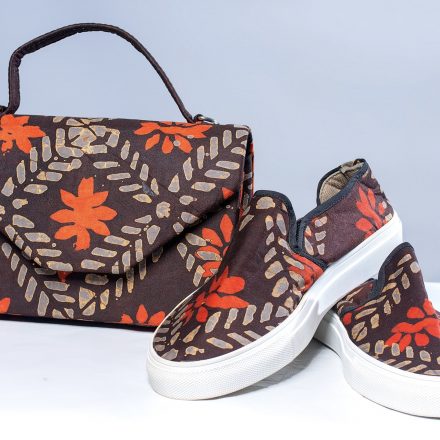Title: Exploring the Vibrant Tapestry of Adire: A Journey Through Its Rich History
In the world of textile art, few traditions possess the vibrant history and cultural significance of Adire. Originating from the Yoruba people of Nigeria, Adire is a traditional indigo-dyed fabric renowned for its intricate patterns and deep cultural roots. The history of Adire is not merely a narrative of textile production; it is a testament to the ingenuity, creativity, and resilience of a people.
The story of Adire begins centuries ago, in the southwestern region of Nigeria, among the Yoruba people. The word “Adire” itself translates to “tie and dye” in Yoruba, which succinctly describes the intricate process through which these beautiful textiles are created. Historically, Adire was primarily produced by women, who played a central role in the art of dyeing and patterning the cloth. The techniques used in Adire production have been passed down through generations, preserving ancient knowledge and skills.
The earliest known examples of Adire date back to the 19th century, although some historians speculate that its origins may stretch even further into the past. At its inception, Adire was created using natural indigo dye extracted from the leaves of the indigofera plant, which grows abundantly in the region. The dyeing process was arduous and time-consuming, involving several stages of dyeing and resist-dyeing techniques to achieve the desired patterns.
One of the most iconic methods of creating Adire patterns is known as “tie-dye” or “resist-dyeing.” In this technique, sections of the cloth are tied or stitched tightly with raffia or thread before dyeing, creating areas that resist the dye and remain white or lighter in color. This process allows for the creation of intricate and symmetrical patterns, ranging from geometric designs to elaborate motifs inspired by nature, mythology, and everyday life.
The popularity of Adire soared during the 20th century, as it became increasingly associated with Yoruba identity and cultural pride. Adire cloth was worn for special occasions, such as weddings, festivals, and ceremonies, and also served as a form of communication, conveying messages through the symbolism of its patterns. Each Adire design carries its own significance, often reflecting the social status, beliefs, and aspirations of the wearer.
Despite its deep cultural significance, Adire faced challenges in the wake of colonialism and the introduction of cheaper, mass-produced textiles from Europe. However, rather than fading into obscurity, Adire experienced a resurgence in the late 20th century, thanks to the efforts of artisans, activists, and scholars dedicated to preserving Nigeria’s cultural heritage.
Today, Adire continues to thrive as a vibrant art form and a symbol of Yoruba identity and heritage. While traditional techniques remain integral to its production, contemporary artisans are also exploring innovative approaches to Adire, experimenting with new dyeing methods, colors, and designs. The versatility of Adire has also led to its adaptation in various forms, including clothing, accessories, home décor, and contemporary art.
In recent years, there has been growing international recognition and appreciation for Adire, with exhibitions, workshops, and collaborations bringing this ancient art form to a global audience. The rise of sustainable fashion and ethical consumerism has further fueled interest in Adire, as consumers seek out handmade, environmentally friendly alternatives to mass-produced textiles.
As we celebrate the rich history of Adire, it is essential to acknowledge the contributions of generations of Yoruba artisans who have preserved and enriched this cultural legacy. Their craftsmanship, creativity, and cultural wisdom continue to inspire and captivate audiences around the world, ensuring that the story of Adire remains woven into the fabric of our shared human experience. In an era of rapid globalization and cultural homogenization, Adire stands as a powerful reminder of the beauty and resilience of indigenous art forms, inviting us to embrace and celebrate the diversity of our world’s cultural heritage.





